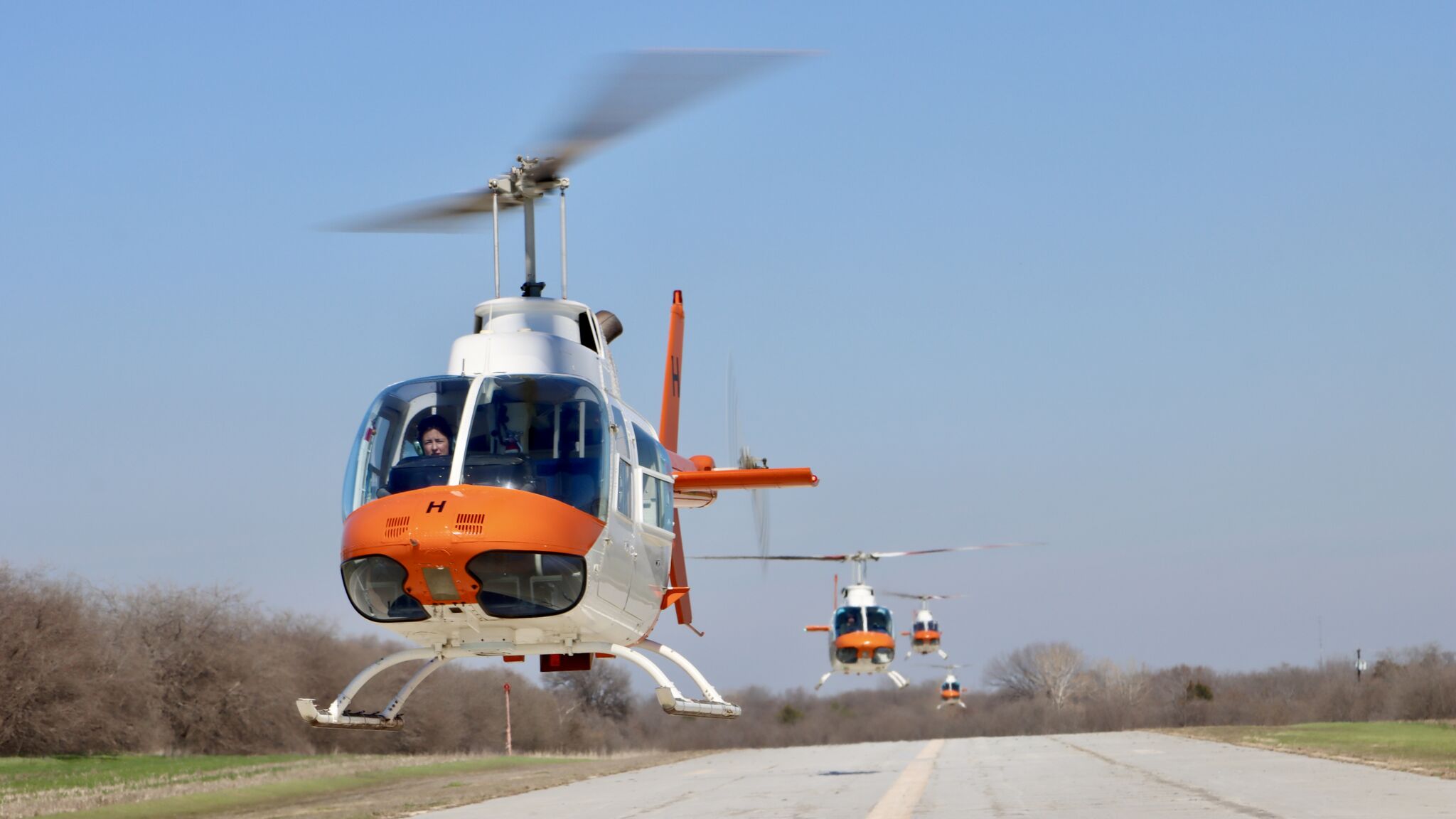The US DoD trains thousands of military helicopter pilots each year and these are produced by the US Army, Navy and Air Force to different standards using unique training pipelines and utilizing different training aircraft. All three services have, or are in the process, of adopting new training syllabi to address a number of shortfalls. This feature looks at those processes and asks – can current costs be sustained and is it time for change?
Training provided to military helicopter pilots can be considered under the three broad headings of primary, type conversion and tactical. Increasingly, much of this training is conducted by commercial contractors to provide a blended learning environment that frequently features aircraft, synthetic training equipment, instructors and supporting resources such as classrooms, maintenance facilities and accommodation. Although this model is growing in popularity, there is no ‘one size fits all’ solution and rotary-wing syllabi therefore vary accordingly.
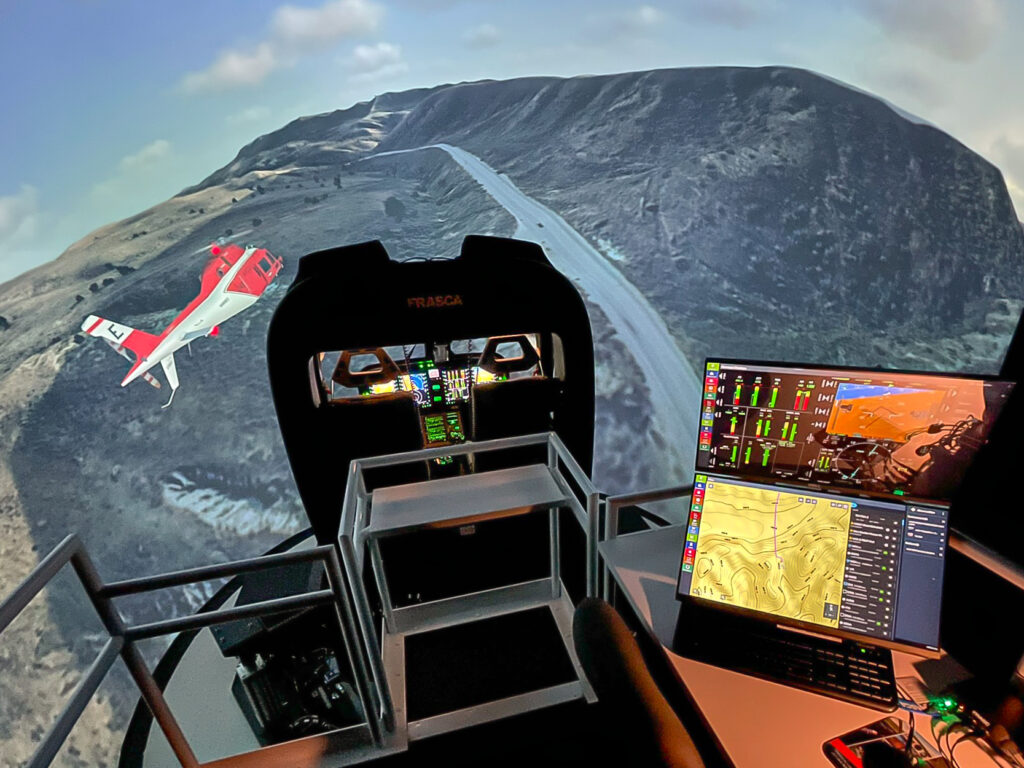
Forecasting helicopter procurement is not made easier when programmes are cancelled or delayed. Here, the US Army’s Future Attack Reconnaissance Aircraft (FARA) and the UK’s New Medium Helicopter (NMH) initiatives provide examples. The delayed NMH programme and its impact on the UK’s rotary-wing training pipeline has also been exacerbated by the Government’s decision to scrap the 17-strong Puma fleet along with 14 Chinook HC2 aircraft.
Although over USD 2 billion had already been invested in FARA, all is not lost for the US Army. The organisation continues to progress its Future Long Range Assault Aircraft (FLRAA) programme as a UH-60 Black Hawk replacement. Unsurprisingly, the market forecasts all identify the US as the biggest military helicopter market over the next few years and currently, with over 3,500 military helicopters, the lion’s share of this market is held by the US Army. Unfortunately, all is not well with rotary-wing training in that organisation, as it grapples with defining a new training strategy to address key shortfalls.
Go Army
The US Army conducts rotary-wing training at the Army Aviation Center of Excellence (USAACE) at Fort Novosel in Alabama (formally known as Fort Rucker). Students currently undertake an Initial Entry Rotary-Wing (IERW) basic flying phase using the LUH-72 Lakota (a variant of the Eurocopter H145) before moving on to undertake type training on the UH-60, AH-64 or CH-47 during the Advanced Graduate Flight (AGF) Training phase. In theory, the flight training process takes between 12-18 months.
This type or conversion training for the three frontline helicopter types is undertaken by CAE under the Army Advanced Helicopter Flight Training Services contract. This is due to expire in 2027. Highlighting how CAE has benefitted from its close relationship with the US Army over recent years, 2026 will see the company deliver new CH-47F and UH-60M flight simulators to Fort Novosel as part of the US Army Flight School Training Support Services contract.
Unlike many military forces, the US Army does not conduct fixed-wing training prior to IERW. All US Army pilots start with rotary-wing training and those selected for fixed-wing training to fly aircraft such as the C-12 Huron undertake additional training conducted by CAE at Dothan, Alabama that features the Grob 120TP and Beech King Air.
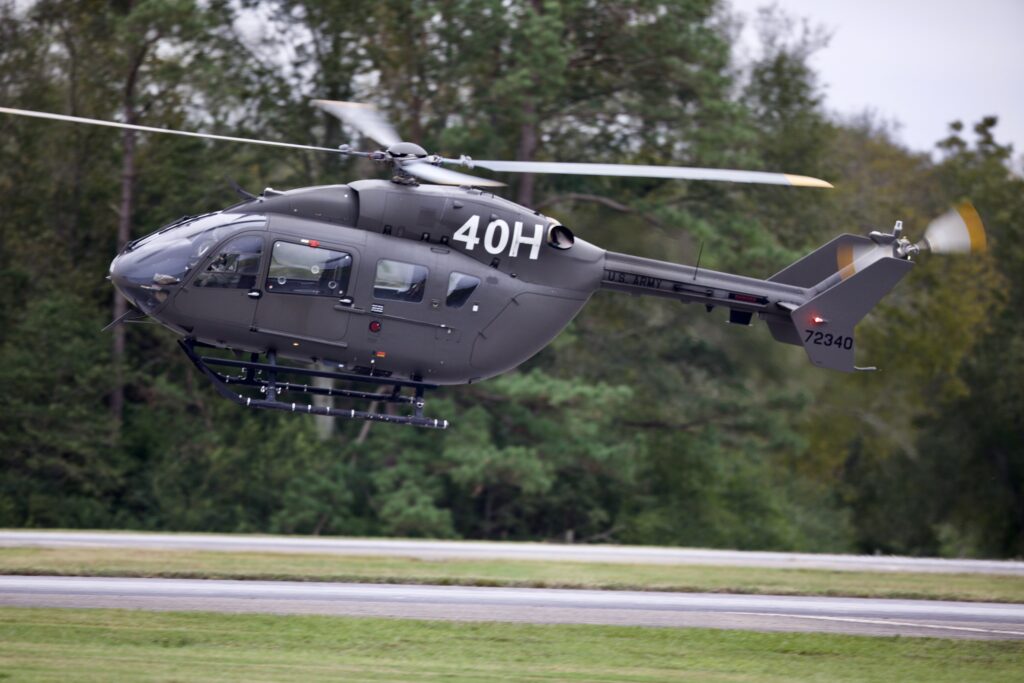
“We’ve seen a troubling trend with our accident rates,” said MG Walter Rugen, Director Army Aviation during in a press briefing in April 2024. This has resulted in the US Army undertaking increased training but perhaps more importantly, take a much closer holistic look at how it conducts its training. According to Rugen, this means, “more training [and] more focused training.”
Increasing emphasis has centred on the LUH-72 Lakota, primarily on its operating costs and the complexity of this twin-engine helicopter. Paradoxically, after the LUH-72 first entered service in 2015, the US Army said it was ‘almost too easy to fly’. This question of complexity as a training platform has not been raised by nations that operate the H145 aircraft in this training role and that is because in most cases, pilots will have conducted initial training on the less-complex H135 or the Bell 206B prior to flying the H145. The other focus has been on the current training syllabi contained within the IERW including the integration of classroom training and the use of synthetic training equipment.
The current situation is serious and focussing minds in Washington. On 15 November 2024 the US Government posted a RFI; to “inform the Army’s analysis and development of options to transform Army IERW Flight Training at Fort Novosel, Alabama, including the potential replacement of the current IERW helicopter (Lakota LUH-72) to reduce costs, gain efficiencies, and maintain or increase aviation training quality.”
As the RFI highlights, the current IERW course operates, “with inefficiencies from years of change and multiple disparate contracts” due to numerous changes of industry providers. Known as the IERW Training Next Generation, an industry day was held in late October 2024 and responses were submitted in early December. Bearing in mind this RFI is only the beginning of the procurement process, it will be a number of years before any real changes are made.
USAF training
To put the USAF’s helicopter pilot training requirement into perspective, of the 1,350 fixed- and rotary-wing pilots trained in 2023, around 90 graduated as helicopter pilots. This is much smaller than throughput for the US Navy and US Army but one common denominator is the USAF’s inability to attract military pilots. All three services are now suffering a pilot shortage.
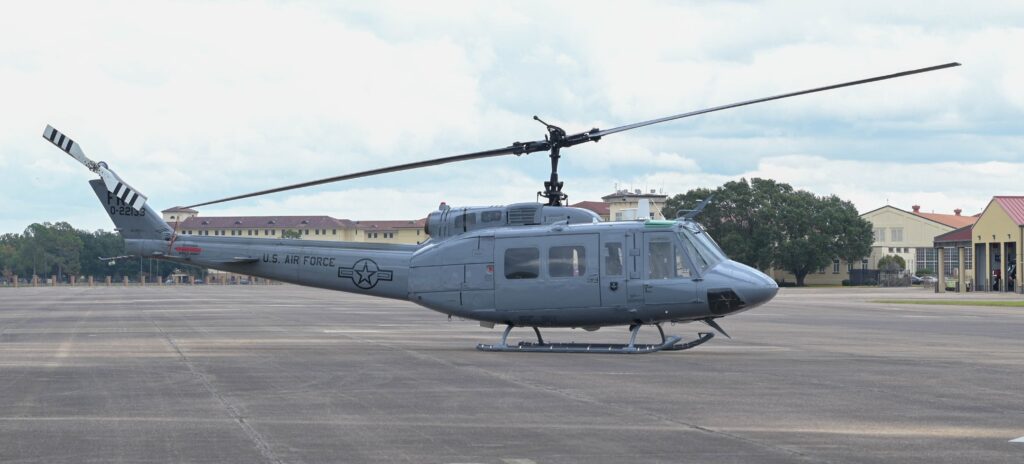
Following-on from the USAF’s Pilot Training Next (PTN) studies that were designed to streamline all pilot training to address its pilot shortfall by reducing the time that the undergraduate pilot spent in the training pipeline, specific changes have been made to the rotary-wing training process. The result was that the service introduced Helicopter Training Next (HTN) in 2020. The approach removed the fixed-wing T-6 Texan training phase, thereby freeing this valuable training resource to be used solely for the fast-jet and multi-engine pilot training pipelines. The first seven officers graduated from HTN in June 2021. The USAF estimates that by cutting the T-6 phase it will reduce the cost of rotary-wing training by 37%, improve efficiency and provide “better continuity for training”.
Expanding HTN, in 2023 the DoD awarded CAE an initial USD 44.5 million contract to provide the USAF with rotary-wing Introductory Flight Training (IFT-R). As part of this programme, worth a maximum of USD 110.6 million over the total contract term, CAE will use a fleet of six Bell 505 Jet Ranger X helicopters that have been configured specifically to USAF training requirements. Live flight training will be supported by three Bell 505 training devices: a Level 5 Flight Training Device (FTD) and two H1000 Advanced Aviation Training Devices (AATD) supplied by Spanish company, Entrol.
The Safran Arrius 2R-powered Bell 505 is increasingly being used as a training helicopter with 10 now in service with the Royal Jordanian Air Force at the King Hussein Air College in Mafraq. Three Bell 505s are in-service with the Royal Bahrain Air Force and other military training helicopter customers include the Montenegro Air Force, Republic of Korea Army and Republic of Korea Navy. The CAE team providing IFT-R includes Bell Textron, Alpha 1 and Navigator Development Group working together to support areas such as flying operations, synthetic training and classroom training.
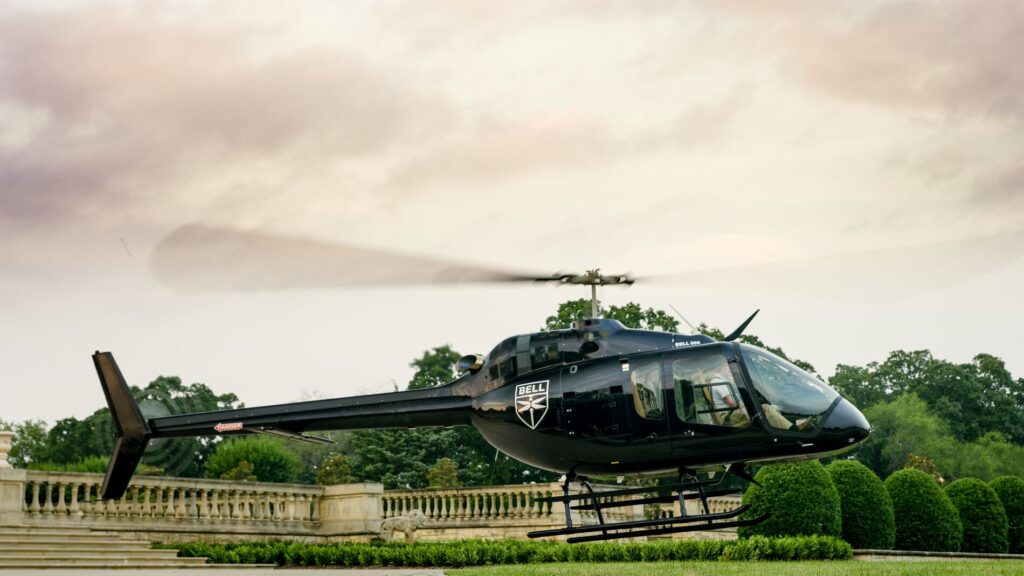
USN approaches
Unlike the US Army and USAF, the US Navy currently retains the use of a fixed-wing phase of training for its helicopter pilots using the T-6B Texan although this approach is undergoing transition. Within the Advanced Helicopter Training System (AHTS), rotary-wing training was provided by the TH-57 Sea Ranger helicopter but in 2021 it was decided to start replacing this platform with the Leonardo TH-73A Thrasher.

After initial selection, Student Naval Aviators (SNA) report to NAS Pensacola, Florida for medical screening and ground school. This is followed by approximately 10 hours of introductory flight in a light fixed-wing aircraft before SNAs move to a commercial training provider, The Helicopter Institute in Fort Worth, Texas. Flying the Bell 206, SNAs basically undertake a FAA Part 141 Private Pilots Helicopter certificate course where they log around 50 hours flight time.
As of 7 January 2025, 80 student pilots had undergone COPT-R training in Texas. Cdr Allen said that; “Students complete their training…months earlier than their peers, with each student representing a cost savings of approximately [USD] 230,000 for the Navy.”
The next phase sees them move on to Training Air Wing 5 at Whiting Field in Florida to carry out Advanced Helicopter Training (AHT) for 12 weeks on the TH-73A (a variant of the Leonardo AW119 Koala). AHT sees students complete 81 hours ground training and 50 flight hours The US Navy is to receive 130 TH-73As with the last delivery set for 2025. According to the US Navy, “the TH-73A improves pilot training and skills by using current cockpit technologies and modernized training curriculum that reflect the capabilities in the current Navy, Marine Corps and Coast Guard inventory.”
In terms of simulation for the TH-73A, FlightSafety Defense provides Contractor Instructional Services (CIS) and maintenance for 18 Frasca Level 6 and Level 7 FTDs each featuring Aechelon visual systems. Eight of these devices are new builds and 10 are modified TH-57 devices. In addition to the FTDs, Frasca has also supplied seven Part Task Trainers (PTT) and 15 Desktop Avionics Trainers (DAT) under a contract from Booz Allen Hamilton. According to John Frasca, President of Frasca, “the combination of DAT, PTT, and high-fidelity FTDs enable students to reach higher levels of proficiency in fewer actual flight hours, [thereby] accelerating training.”
It may surprise many that the US DoD does not rationalise its rotary-wing training to provide a common core syllabus covering primary-basic training. This idea is not new, and various US DoD, Congressional and General Accountability Office (GAO) studies have recommended this approach since the 1960s. In 1977 for example, in its ‘Consolidation of Helicopter Pilot Training’ report, the GAO opined that; “all services’ helicopter pilot training should be consolidated into a single program conducted by the Army. A single training syllabus applicable to all services can be developed, and large annual savings can be achieved.”
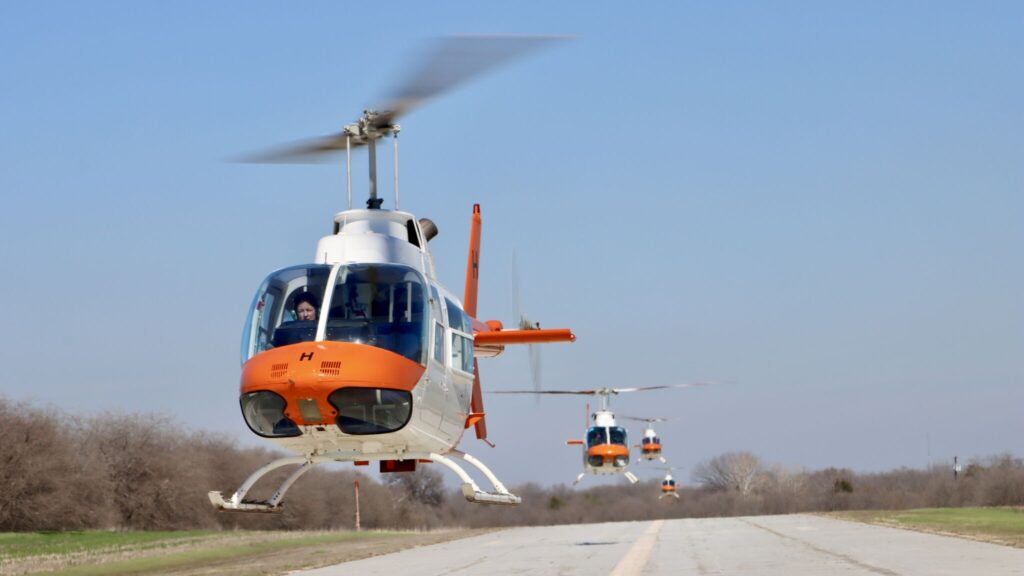
Putting things into perspective
There is no doubt that the US Navy, Army and Air Force have their own entrenched ideas when it comes to rotary-wing training. The main reason for this is that all three services believe that their employment of helicopters is unique and special cases demand special training. Although this is partly true, these differences could be addressed during advanced or conversion training phases after the provision of a tri-service initial or basic training phase, using a syllabus akin to the current USAF model that uses the Bell 505. If this solution were to be adopted, the savings would be significant.
Countries where helicopter pilot training is centralised, such as Canada and the UK, seem to be reaping cost savings, but in fairness, the scale of training demanded in these countries is clearly much smaller in comparison to the US.
One thing that is clear in the US is that all three helicopter training pipelines are undergoing major changes at the present time. The numbers of students going through those training pipelines are significant and their uninterrupted flow is not helped by the US procurement system that sees commercial companies made responsible for discrete elements such as the provision of training aircraft, training services, flight and ground instructors, aircraft maintenance and general logistics.
These contracts generally run for five years and are renewed every year, meaning that the training pipeline is disjointed and this precludes long-term planning; a process made worse if a losing company ‘protests the award’.
With the Pentagon having failed its latest audit, the DoD is now firmly in the sights of the Department of Government Efficiency (DOGE) and its boss, Elon Musk. Change may be forced even in the face of individual service desires.
Trevor Nash



